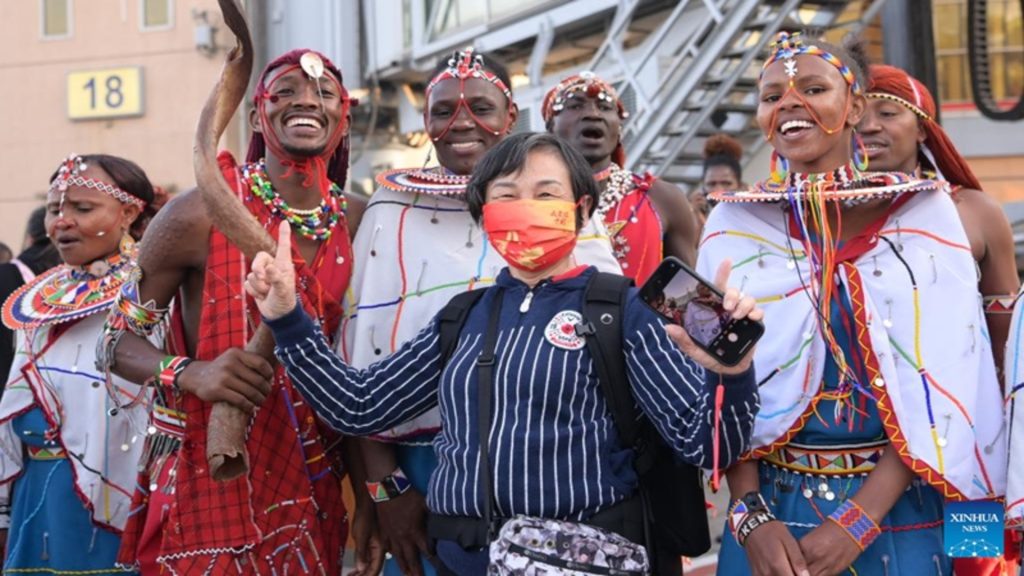Chinese travelers are raring to go abroad again, but the destinations they choose may be a little different from the pre-pandemic era. Iran has became a “black horse” destination for Chinese tourists, who are also eyeing Russia, Egypt and countries in the Caucasus region.
China on Wednesday resumed outbound group tours for Chinese citizens to another 40 destinations including Nepal, Vietnam, Iran, France, Spain, Italy, Georgia, Azerbaijan and Brazil starting from Wednesday.
What surprised tourist agencies is that Iran has became the biggest “black horse” after group tours were allowed for more countries. An employee surnamed Lu from U Tour, a tourist agency specializing in international travel, told the Global Times on Wednesday that the firm’s 13-day Iran tour, priced at 29,800 yuan ($4,333), was sold out within one day. The latest one available will be around the end of April, said Lu.
“To be honest we were surprised and not prepared for such a frenzy for Iran…Clients who choose Iran are generally aged 40-50, who are more capable of appreciating the depth of Iranian culture. Also, the country introduced visa-free policies for Chinese travelers,” said Lu, adding that the agency plans to increase routes to the Middle East country.
Other agencies were quoted by media as saying that their Iran tours sold out quickly. A travel agency told The Paper that 30 places for a 10-day Iran trip were sold out in half a day.
“Iran is blessed with rich Persian culture, and it has so much to offer — food, scenery. Moreover, it is so different from Chinese culture,” a 32-year-old Beijing resident surnamed Xie who is planning to visit Iran told the Global Times.
She said that the traditionally popular Southeast Asian countries are packed with travelers after China reopened its borders, and the scenery is similar to the southern part of China. Iran and countries that are far away are more exotic.
Lu said Russia, Egypt and countries in the Caucasus region are among the most popular at his agency. He said a 15-day train trip to Russia (about 30,000 yuan per person), starting from Beijing or Manzhouli, a major China-Russia border city in North China’s Inner Mongolia Autonomous Region, is among the top picks for travelers.
Many Southeast Asian countries – namely Thailand, the Philippines and Indonesia – were among the first batch of countries that China allowed outbound group tours for in early February, after China downgraded the management of COVID-19 from Class A to Class B on January 8 this year.
Thailand was the top pick of many Chinese holidaymakers. However, after one month, some Chinese tourists are concerned about soaring expenses.
“Airfares have doubled, and the hotel where I used to stay in 2019, which cost me 300 yuan per night back then, has climbed to 800 yuan,” Wang Bin, a Chengdu resident who traveled to Thailand at the end of February, told the Global Times.
In recent years, the decline of international flights has led to excessive demand for tickets, and most international travel spots are still recovering from the pandemic, so prices are soaring, said Dai Bin, director of the China Tourism Academy.
China’s domestic travel market will boom during the Labor Day holiday, which falls in early May. Media reported that bookings of domestic hotels for the holiday are up 144 times compared with the same period in pre-pandemic 2019.
Dai’s institute predicted in February that 4.55 billion domestic trips will be made in China in 2023, recovering to roughly 76 percent of the 2019 level.
As of March 7, the immigration authorities nationwide had recorded 39.72 million people entering and exiting the country, up by 112 percent from the same period last year, the Global Times learned from the National Immigration Administration last week.
Courtesy Global Times





